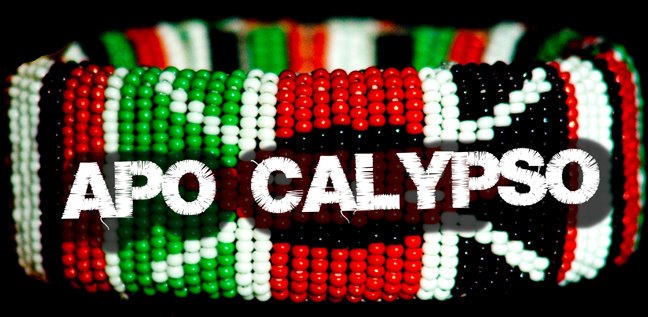It is our privilege to announce that, after two and a half years of nomadic wandering in search of indigenous guidance, Apo Calypso Productions has come full circle. What once began as a vision to germinate seeds of inspiration in tarnished soil is now flourishing into a garden of mental and spiritual nourishment. Our continued devotion to our vision has brought us home, to the place of our origin, looking back on the journey we have undertaken thus far.

Apo Calypso Productions find our selves welcomed, once again, into the luminous valleys where the Massai of Kenya continue to preserve their indigenous ways of life. Here, under the sun beaming skies of the rift valley, we have come to fulfill a promise to the community of Il Ngwesi and to conclude the final chapter of our approach to films of cultural immersion.
Throughout the course of the last three weeks, Apo Calypso Productions has been thoroughly engaged with the community, presenting them with the fruits of our collaborative labors. We have been traveling throughout the territory, showcasing Il Ngwesi: People of Wildlife to elders, women, warriors and children alike, providing an opportunity for the community to reflect and celebrate their own way of life that has served as a driving force behind our works. We hope that the introduction of this film of cultural reclamation to those Maasai children who occupy the six schools within the territory will help to reinforce the legitimacy of indigenous forms of knowledge and help to preserve the profound connection that the Maasai maintain with their environment.

Recognizing the privilege we have had in being able to spend so much time with the Maasai, we will be sharing our intimate encounters with those who are less fortunate. For many slum dwellers in Kenya, the Maasai, despite their close proximity, are a world apart. Trapped in a vicious game of survival in the bottom rung of an oppressive hierarchy, many street children find themselves orphans whose only guidance are the rules of the street, where they are forced to survive on the waste of others. We will be organizing a screening of our film in Kibera, the largest slum in Kenya, where inhabitants of all ages are welcome to witness the bondage-free lifestyle that the Maasai have been able to achieve. Furthermore, we will be inviting a number of street children to accompany us in our intimate encounters with the Maasai, in hopes of awakening them to a world of possibility outside of their own.
In light of our devotion to the mission of inspiring sustainability through living indigenous cultures, we are always eager to find new ways that increase our ability to do just this. Thus, in order to keep up with the rapid technological advancements in the film industry, given our recent upgrades in technical capacities, we will be attempting to recreate Il Ngwesi in a High-Definition format. This undertaking will help to enhance the aesthetic capabilities of the film in rendering audiences awe-struck, increase its ability to inspire, and better connect viewers to those essential life-giving relationships from which the modern world is often removed.
With this journey we are also beginning to look outside the niche of film-making and photography for other means of accomplishing our mission. Hence the development of a new eco-tourism company: Baraka Tours. A collaboration between the community of Il Ngwesi and Apo Calypso Productions, Baraka Tours will specialize in providing tourists with unique and intimate encounters with the Maasai of Il Ngwesi and the fisherman culture of Lamu. Unlike many other tour companies, Baraka Tours will cater to providing life-changing experiences that grant clients the chance to not only visit these communities, but to stay and live amongst them as well. This initiative, furthermore, will inevitably help Il Ngwesi to preserve their way of life simply by practicing it. Though it is a massive undertaking to develop such an initiative, we believe it to be a worthwhile endeavour for both the community as well as the tourists, who will take home with them a renewed perspective of community and environment. Having already spoken to the community, organized accommodations, obtained a sail-boat, and brought a number of American tourists to Il Ngwesi, Baraka tours is well underway.
In addition to this new development, we are also in the process of creating, in collaboration with Il Ngwesi, a line of Maasai jewellery to be distributed back in Toronto, and inevitably beyond. Maasai Mama, the working name for the initiative, will distribute fair trade Maasai products to cultural and fashion outlets throughout the Greater Toronto Area. Each of these cultural pieces will be accompanied by a unique biography of its creator, and the inspiration behind the piece. We believe that, given the bold color, unique design, and incredible durability of the jewellery, Maasai Mama has the potential to tend to a far-reaching demographic, who, by purchasing the jewellery, will contribute directly to Il Ngwesi in their fight to preserve their culture. We will be undertaking a series of photo shoots over the course of the next month to help promote this line.
While these business endeavors get underway, the development of our new website and business plan continues to advance. We hope that come late-August, Apo Calypso will have a new online domain, from which we will continue to keep you updated with video, photographic, and written documentation of progress we are making towards the completion of our world-wide 7-part meditative series on the magical essence and profound sustainability of the indigenous worldview. We look forward to it.
Onward and Upward,
Apo Calypso Productions























